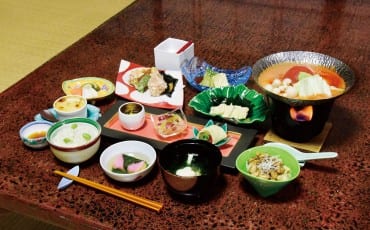Articles
Features
Oct 1, 2014
The Beauty of Japanese Vinegar
The beauty of Japanese vinegar is it’s not just used in cooking, but for a myriad of other purposes as well.
Japanese vinegar is one of the five key ingredients used in Japanese cooking, and can be made from fermented rice or mixed grains. Mixed grain vinegar is usually made from corn, wheat, and other assorted grains. Rice vinegar is created through a fermentation process where sugars, or carbohydrates, are converted into acetic acid. Acetic acid forms the basis for vinegar’s distinct flavour, colour, and aroma. Unlike other Asian vinegars, Japanese vinegar is very mild and mellow, both in terms of taste and colour. It ranges from being colourless to a pale yellow, and has a mild flavour with slight hints of sweetness.

Awasezu (blended vinegar) is a popular type of Japanese vinegar where different ingredients are added to the vinegar to create different flavours. Without it, the ubiquitous sushi rice would have none of that distinctive sharp flavour. Sushi-zu (Sushi vinegar) is made with a blend of sake, salt, sugar, and on occasion, mirin. Although you can prepare this concoction at home, most people opt to buy ready-made sushi-zu at supermarkets.
Apart from being used in sushi, Japanese vinegar is also used in a wide variety of dishes, such as sunomono, which are dishes — typically seafood and vegetables — that have been seasoned with vinegar-based dressings. Other permutations include tsukemono (pickled vegetables), which can be served as a side dish, a snack, or a simple garnish for meals, as well as nimono (simmered dishes). The latter is usually prepared using a base ingredient such as a vegetable, fish, seafood, or tofu, that is simmered in dashi stock until the liquid is absorbed into the base ingredient. dashi stock is typically a blend of Japanese vinegar, Sake, and soy sauce. Other condiments such as mirin, miso, sugar or salt can be used to enhance the flavour. In addition, Japanese vinegar is also occasionally added to marinades to temper the robust flavours of certain fishes or meats.
The versatility of this condiment also extends to beverages. Several vinegar-based brews are also popular as health beverages, as you’ll soon discover in the following pages.
(Text Vanessa Tai image 7199072 | paylessimages • www.pixtastock.com)








